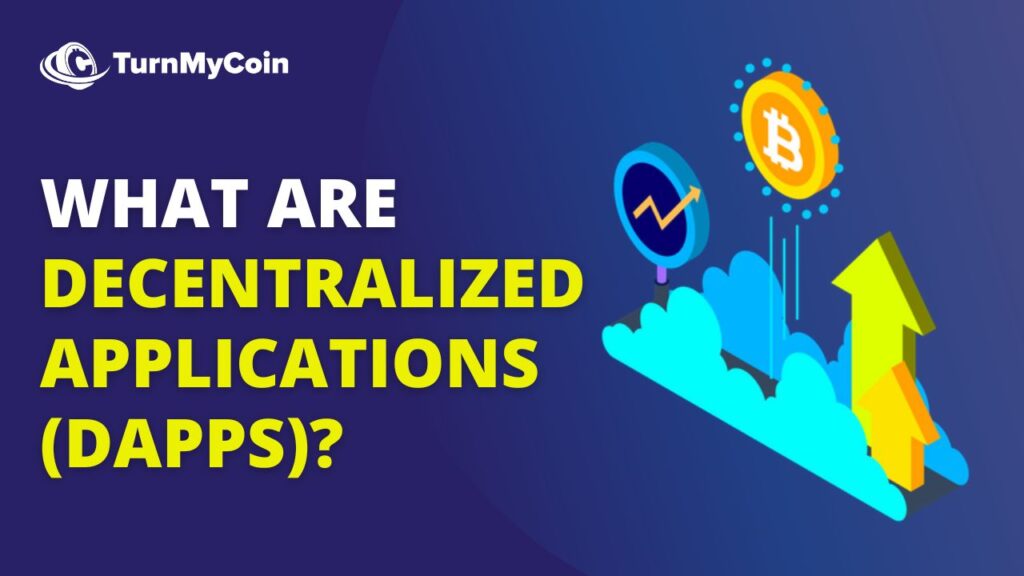Last updated on March 3rd, 2023 at 01:13 pm

Introduction
Decentralized Applications or DApps, are a new type of software that runs on a decentralized architecture. Unlike traditional apps that rely on a central server to manage and store data. DApps are built on a decentralized network of computers, often powered by blockchain technology.
This decentralized architecture allows for increased security, immutability, and censorship resistance. DApps can range from decentralized exchanges, wallets, lending and borrowing platforms, gaming and social media platforms, and many others.
They are also open-source and community-driven, allowing for transparency and fairness in the application’s development and usage.
Traditional apps, on the other hand, rely on a central server or authority to control and manage the application. This central point of control makes them vulnerable to hacking, data breaches, and censorship.
Additionally, traditional apps are often owned and controlled by a single entity, which can lead to a lack of transparency and fairness. Decentralized applications, on the other hand, are built on a decentralized network of computers.
This decentralized control and ownership of data and the application’s development and usage, is one of the key advantages of DApps over traditional apps.
1. How DApps Work?
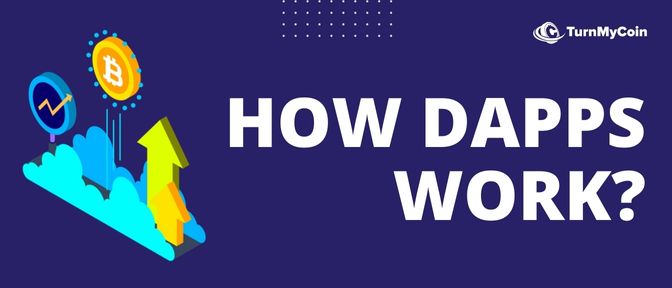
DApps meaning decentralized applications, work by utilizing a decentralized architecture, powered by blockchain technology. This decentralized network of computers allows for distributed control and management of the application, rather than relying on a central server or authority. here are step by steps.
There is no one authority or organization that has control over DApps and coded using Smart Contracts. Let us understand each of the components of DApps.
- Decentralized Architecture: The foundation of DApps is a decentralized architecture, here the application is built on a network of computers rather than a central server. This decentralized network can be a blockchain, a peer-to-peer network, or any other decentralized technology that allows for a distributed control and management of the application.
The decentralized architecture makes sure one organization cannot influence the working of a DApp. - Use of Blockchain Technology: Most decentralized applications use blockchain technology as the underlying decentralized architecture. Using blockchain technology, records can be kept securely and transparently on a decentralized, distributed ledger.
DApps use blockchain to store and manage data, as well as to facilitate transactions within the application. The use of blockchain technology also allows for increased security, immutability, and censorship resistance. - Smart Contract Functionality: Smart contracts are self-executing contracts with the terms of the agreement written into code. DApps use smart contracts to automate certain processes within the application, such as the execution of transactions and the management of data.
Smart contracts also allow for increased security, immutability, and censorship resistance by ensuring that the rules and conditions of the contract are automatically enforced.
2. Types of DApps
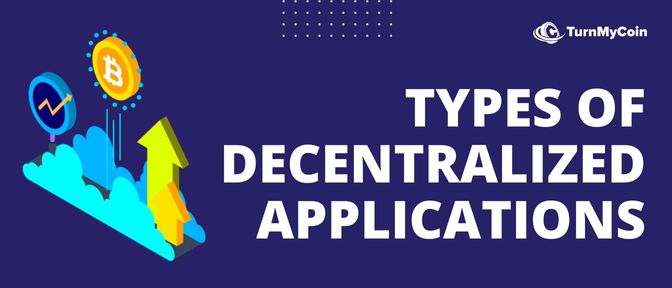
There are several different types of decentralized applications, each with their own unique use cases and benefits.
1. Financial DApps
Financial DApps are decentralized applications that focus on handling financial transactions and assets. These types of DApps include:
- Cryptocurrency wallets and exchanges: These are decentralized platforms that allow users to store, send, and receive various types of cryptocurrencies. They also provide a way for users to buy and sell cryptocurrencies on a decentralized exchange.
- Decentralized lending and borrowing platforms: These platforms allow users to lend and borrow cryptocurrencies or other assets without the need for a central authority. They use smart contracts to automate the process and ensure that all transactions are secure and transparent.
2. Gaming DApps
Gaming DApps are decentralized applications that focus on providing blockchain-based games and gambling platforms. These types of DApps include:
- Blockchain-based games and gambling platforms: These are decentralized platforms that allow users to play games and engage in gambling activities using cryptocurrencies or other assets. They use smart contracts to ensure that all transactions are fair and transparent.
- In-game item trading platforms: These platforms allow users to buy, sell, and trade in-game items using cryptocurrencies or other assets. They use smart contracts to ensure that all transactions are secure and transparent.
3. Social DApps
Social DApps meaning Social Decentralized Applications that focus on providing decentralized social media platforms and content sharing and creation platforms. These types of DApps include:
- Decentralized social media platforms: These are decentralized platforms that allow users to create and share content, connect with others, and engage in social activities without the need for a central authority.
- Content sharing and creation platforms: These platforms allow users to create and share various types of content, such as
- Articles,
- Videos, and
- Images, using cryptocurrencies or other assets.
They use smart contracts to ensure that all transactions are secure and transparent.
3. Advantages of Decentralized Applications
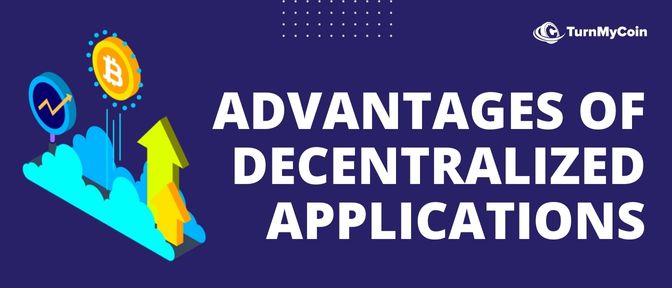
DApps have several advantages over traditional applications that make them more secure, transparent, and resistant to censorship.
1. Increased Security and immutability
One of the major advantages of DApps is their increased security and immutability. Because DApps run on a decentralized blockchain network, they are not controlled by any single entity or organization.
This eliminates the risk of a central point of failure and makes it much more difficult for hackers to compromise the system.
Additionally, because transactions on the blockchain are recorded in a public ledger that is replicated across the entire network, it is virtually impossible to alter or delete any data once it is recorded.

2. Censorship resistance
Another advantage of DApps is their censorship resistance. Because DApps are decentralized and not controlled by any single entity, it is much more difficult for governments or other organizations to censor or shut down their operations.
This makes DApps an ideal platform for activities that may be considered controversial or illegal in certain jurisdictions, such as political activism or whistleblower platforms.
3. Decentralized control and ownership
A further advantage of DApps is their decentralized control and ownership. Because DApps are not controlled by any single entity or organization, they provide a way for users to take control of their own data and assets.
This can be beneficial for several use cases such as remittances, micropayments and peer to peer lending. Additionally, DApps provide a way for users to earn cryptocurrency or other assets by participating in the network, such as by providing computing power or contributing content.
4. Disadvantages of DApps
While DApps have several advantages over traditional applications, they also have some limitations and challenges that need to be addressed.
1. Complexity of use
One of the major disadvantages of DApps is their complexity of use. Because DApps run on a decentralized blockchain network, they require users to have a certain level of technical knowledge and understanding of how the technology works.
This can make it difficult for non-technical users to understand and use DApps, which can limit their adoption and usability. Additionally, DApps often require users to have a cryptocurrency wallet and a certain amount of cryptocurrency in order to interact with the platform, which can also be a barrier to entry for many users.
2. Limited scalability
Another disadvantage of DApps is their limited scalability. Because DApps run on a decentralized blockchain network, they are limited by the amount of computing power and bandwidth available on the network.
This can make it difficult for DApps to handle large amounts of data or handle a large number of users. Additionally, the current blockchain technology is not able to handle the same amount of transactions per second as centralized systems like Visa or Mastercard.
As a result, DApps are not yet able to match the speed and efficiency of traditional applications.
3. Lack of mainstream adoption
A further disadvantage of DApps is their lack of mainstream adoption. As DApps are still a relatively new technology, they have not yet been widely adopted by the general public or mainstream businesses.
This can make it difficult for DApps to gain traction and attract users, which can limit their potential for growth and success. Additionally, DApps are still not well understood by the majority of the population, which can make it difficult for them to gain widespread acceptance.

5. Current State of DApps
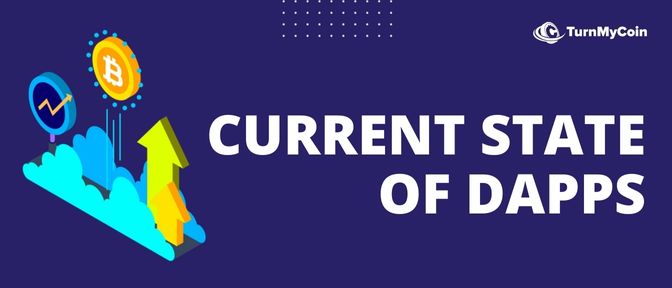
Currently, the most popular DApps are decentralized exchanges (DEX) and non-fungible token (NFT) marketplaces, with a majority of the DApps usage concentrated in the Ethereum blockchain.
According to Dappradar, Uniswap, SushiSwap, and Aave are the top 3 DApps by daily active users and trading volume. These DApps have seen rapid growth in usage and adoption in recent months, with Uniswap alone processing over $5 billion in trading volume in a single day.
6. Challenges facing the development and adoption of DApps
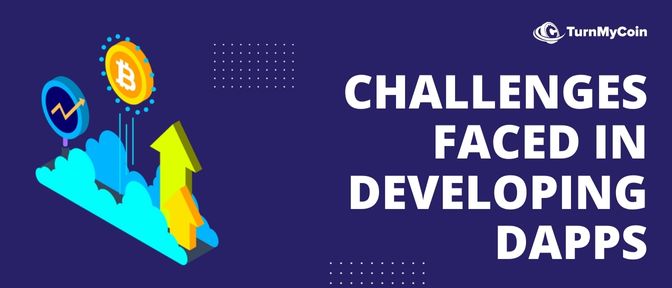
Despite the growing interest and development in DApps, there are still many challenges facing the development and adoption of DApps.
One of the major challenges is scalability. As current blockchain technology is not able to handle the same amount of transactions. This can make it difficult for DApps to handle large amounts of data or handle a large number of users.
Another challenge facing DApps is user experience. As the current DApps are not user-friendly and require a certain level of technical knowledge to use. This can make it difficult for non-technical users to understand and use DApps, which can limit their adoption and usability.
Additionally, DApps often require users to have a cryptocurrency wallet and a certain amount of cryptocurrency in order to interact with the platform. It can also be a barrier to entry for many users.
Future developments and potential impact of DApps: Despite the challenges facing DApps, there are many future developments and potential impact of DApps. As the technology matures and becomes more user-friendly, we can expect to see more adoption and mainstream acceptance of DApps.
Additionally, researchers and developers are working on scaling solutions to address the limitations of the current technology.
Moreover, the potential impact of DApps goes beyond just the financial and gaming industries. DApps have the potential to revolutionize several industries such as supply chain, voting systems, and healthcare.
They can provide transparency and immutability in the processes, reducing fraud and providing trustless systems.
Conclusion
DApps are a new type of software that run on a decentralized blockchain network.
With the potential to revolutionize the way we handle transactions and assets. DApps have several advantages such as increased security, immutability, and censorship resistance.
But also have some limitations such as complexity of use, limited scalability, and lack of mainstream adoption.
The current state of DApps is still in its early stages majority of usage is concentrated on the Ethereum blockchain. The most popular DApps are decentralized exchanges and NFT marketplaces. However, there are many future developments and potential impact of DApps in various industries.
As the technology matures and becomes more user-friendly. It’s important to note that DApps are still a developing technology and it’s important to keep an eye on its progress and evolution.
